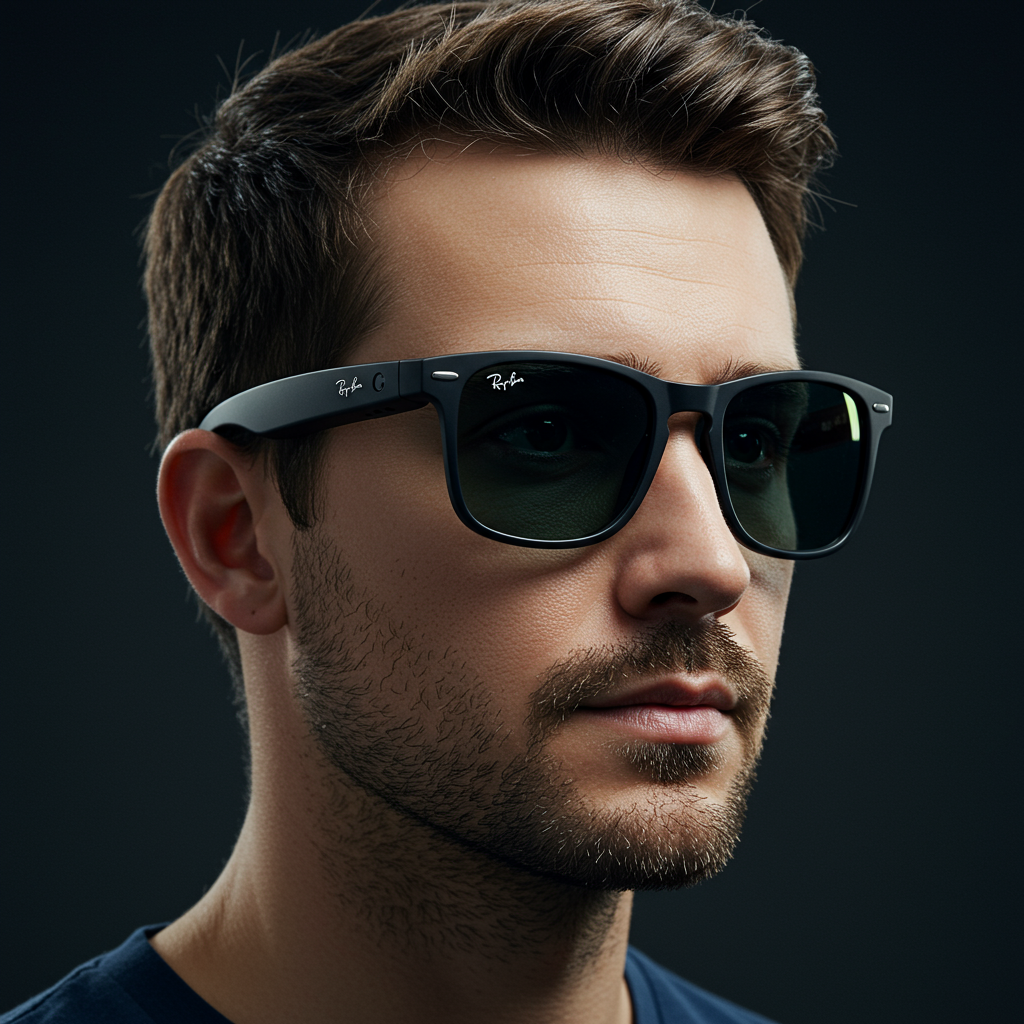Considering smart glasses but feel overwhelmed by futuristic designs and hefty price tags? You’re not alone. Many people seeking hands-free tech wonder if there’s an option that blends seamlessly into everyday life without drawing attention. This deep dive explores the surprising value found in Amazon’s Echo frames (3rd Gen), particularly when compared to the popular Ray-Ban Meta smart glasses. While the Meta pair boasts advanced features like cameras and integrated AI, the Echo Frames impressed me by excelling at a more subtle, practical approach.
Smart glasses are rapidly evolving, branching into different categories like augmented reality (AR) displays, AI assistants, and simple audio or voice-controlled devices. The Amazon Echo Frames (3rd Gen) firmly plant themselves in the latter category. They aren’t designed to overlay digital information onto your view or capture high-quality photos and videos like some competitors. Instead, their core purpose is streamlined, hands-free interaction, primarily centered around Amazon’s Alexa voice assistant. This makes them less of a visual tech gadget and more of a discreet audio and control accessory you wear.
Design and Daily Wearability: Blending In
One of the most significant differences between the Amazon Echo Frames and the Ray-Ban Meta smart glasses is immediately apparent: their appearance. The Meta glasses, while stylish and available in various Ray-Ban designs, incorporate noticeable cameras and are generally thicker. This design choice can lead to unwanted attention or scrutiny, as experienced during a trip through airport security where the camera-equipped Meta glasses raised questions, while the Echo Frames passed through unnoticed.
The Echo Frames, on the other hand, are designed to look remarkably like standard eyeglasses. They are available in various styles and can even be fitted with prescription lenses, blue light filters, or sunglass shades, just like regular frames. This commitment to a conventional look is a major strength. They feel notably light on the face, with components subtly integrated into the arms. While comfortable for extended wear, adjusting the fit can sometimes make them slightly awkward to fold, an minor inconvenience compared to their overall discreet profile.
Core Functionality: Alexa at Your Command
Unlike smart glasses with visual displays or cameras, the Amazon Echo Frames prioritize hands-free audio and voice control. Their primary function is seamless integration with Alexa. This means you can ask questions, manage smart home devices, play music or podcasts, take calls, and receive notifications using simple voice commands, all without reaching for your phone.
For anyone invested in the Amazon smart home ecosystem, the Echo Frames are a powerful, always-available controller. Imagine being able to lock your smart door, turn off lights, or adjust the thermostat just by speaking naturally while keeping your hands free. This capability proved genuinely convenient in daily life, saving steps and streamlining routine tasks. The range of compatible Alexa devices is extensive, from locks and lights to thermostats and security systems.
Audio Performance and Calls
The audio experience with the Echo Frames is delivered through small speakers directed towards your ears. While not designed for immersive, bass-heavy music, they excel at vocal content like podcasts, audiobooks, and phone calls. The audio is clear and bright, making it easy to stay engaged with spoken content while remaining aware of your surroundings – a key benefit over traditional headphones for activities like walking outdoors.
Taking calls is also straightforward and hands-free. The integrated microphones pick up your voice effectively for clear conversations. While dedicated headphones offer superior sound quality for complex music tracks, the Echo Frames provide a practical audio solution for everyday tasks and communication while maintaining situational awareness. Controlling calls or muting the microphone uses physical buttons, a change from older generations which used touch gestures.
Competing Features and Value Proposition
Comparing the Echo Frames directly to the Meta Ray-Bans highlights their different strengths. The Ray-Ban Meta glasses offer robust features centered around their built-in 12MP camera and integrated Meta AI. This allows for hands-free photo and 1080p video capture, livestreaming, and advanced AI capabilities like “Look and Ask,” which uses the camera to identify objects or answer questions about your environment. They also boast excellent audio for calls and music compared to many smart glasses, along with a convenient charging case.
The Echo Frames lack these camera and advanced AI features. However, their value proposition lies in simplicity, discretion, and dedicated Alexa integration. At their standard price of $269, they are only slightly less expensive than the Meta Ray-Bans ($299 base price). But they are frequently available at significant discounts. A noted sale price of $129 makes them considerably more affordable, presenting a compelling entry point into smart glasses for those primarily interested in voice control and smart home integration without the visual or social footprint of cameras.
Charging and User Experience
One area where the Echo Frames lag behind is the charging experience. The 3rd generation model uses a separate charging dock that requires careful alignment of the glasses’ contact points with the dock’s wireless coils. This is less intuitive and convenient than the Ray-Ban Meta’s charging case, which doubles as protective storage and provides on-the-go power. While the Echo Frames offer decent battery life for all-day use with standard interactions, the charging method is a minor hurdle in daily usability.
Navigating features via buttons has replaced the touch controls of previous Echo Frames generations. While voice commands handle most interactions, users will need to adapt to the button layout for tasks like accepting calls or muting. This requires some retraining compared to older models but is manageable given the reliance on voice input.
Who Are These Glasses For?
Ultimately, the choice between Amazon Echo Frames and Ray-Ban Meta glasses depends heavily on user priorities. The Meta Ray-Bans are ideal for early adopters, content creators, and fashion-conscious individuals who want integrated camera features, robust AI capabilities, and stylish eyewear. They offer a modern blend of tech and fashion.
The Amazon Echo Frames (3rd Gen) are best suited for existing glasses wearers heavily invested in the Amazon Alexa ecosystem. They provide an unparalleled, discreet way to control smart home devices and access Alexa on the go. They are also an excellent option for first-time smart glasses buyers seeking a less intimidating, more socially acceptable device focused purely on hands-free audio and voice commands, rather than cameras or complex AR displays. Their ability to blend in and avoid drawing attention, as highlighted by experiences like navigating airport security, makes them a practical choice for daily life.
Frequently Asked Questions
What are the main differences between Amazon Echo Frames and Meta Ray-Ban smart glasses?
The key differences lie in their core functionality and design. Amazon Echo Frames primarily offer hands-free access to Alexa for smart home control, calls, audio, and notifications, and they are designed to look like regular glasses without a camera or display. Meta Ray-Ban smart glasses feature a built-in camera for photos/video, integrated Meta AI with “Look and Ask” capabilities, and focus on content capture and advanced AI assistance, though their design is more visibly tech-integrated.
Which smart glasses are better: Amazon Echo Frames or Meta Ray-Ban?
Neither is universally “better”; they serve different users. Amazon Echo Frames are better for users prioritizediscretion, deep Alexa integration (especially for smart home), and a lighter, more conventional look. They are also often more affordable, particularly on sale. Meta Ray-Ban glasses are better for users wanting camera features, advanced AI assistance, higher audio quality for music, and a more fashion-forward tech accessory.
Can Amazon Echo Frames be used with prescription lenses?
Yes, the Amazon Echo Frames (3rd Gen) are designed to be fitted with prescription lenses, blue light filters, or sunglass lenses by an optician. This makes them a practical option for individuals who already wear glasses and want to integrate smart technology without needing a separate device or contact lenses. This adaptability enhances their appeal as a daily-wear accessory.
Conclusion
While the smart glasses market pushes boundaries with augmented reality and advanced AI, Amazon’s Echo Frames (3rd Gen) prove that sometimes, less is more. By focusing on seamless Alexa integration, hands-free audio, and a discreet design, they offer a practical and impressive experience, especially for smart home users and those seeking technology that doesn’t stand out. Compared to the feature-rich but more noticeable Ray-Ban Meta glasses, the Echo Frames offer a compelling alternative that feels both useful and refreshingly normal to wear every day.




